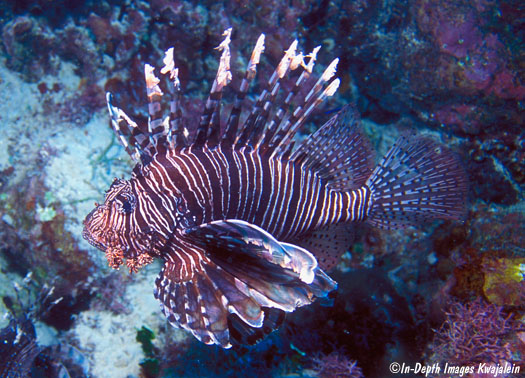
The largest lionfish at Kwaj is Pterois volitans, usually commonly referred to as simply the Lionfish or Turkeyfish, or sometimes the Red Lionfish. These large and majestic fish can be seen either in ledges and caves during the day, or may sometimes be out in the open, hunting or hanging above the reef. Usually they are out hunting small fish at night. The spines are reported to be quite venomous, sometimes causing excruciating pain. Unlike the other lionfish or venomous fish in general, Pterois volitans has been reported to occasionally use its spines aggressively rather than just passively. That is, instead of depending on the victim to puncture himself by putting his hand in the wrong place, these fish have been reported to advance upon a diver with head lowered and spines in front. Fortunately, they do not swim very fast. Nearly all those we have seen have appeared unconcerned about the presence of divers, neither attacking nor retreating. Usually uncommon, there are times when you can see a number at once. At various times, as many as a couple of dozen have been observed around some of the lagoon shipwrecks, such as the Palawan or Fumi Maru (often called the Daisan). Sometimes those wrecks get covered with thick schools of cardinalfish, and this seems to attract quite a few predators, including numerous Pterois volitans.

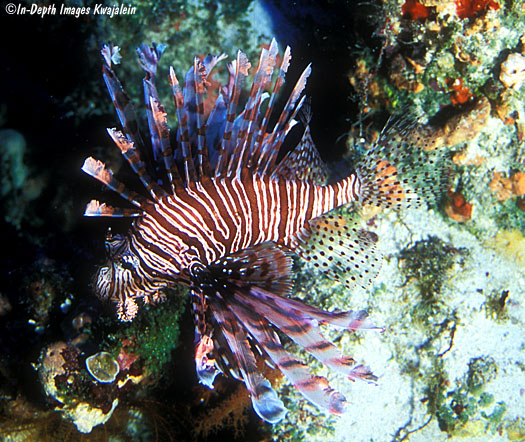
A trio of dreadnaughts move in on a school of cardinalfish hiding among the branches of black coral on a lagoon shipwreck.
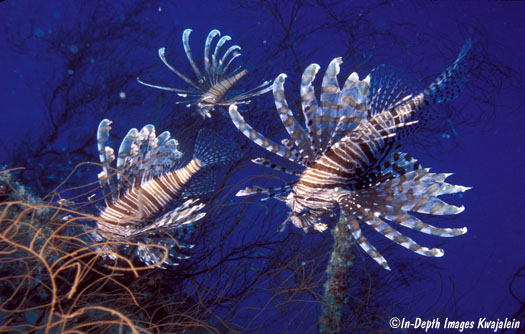
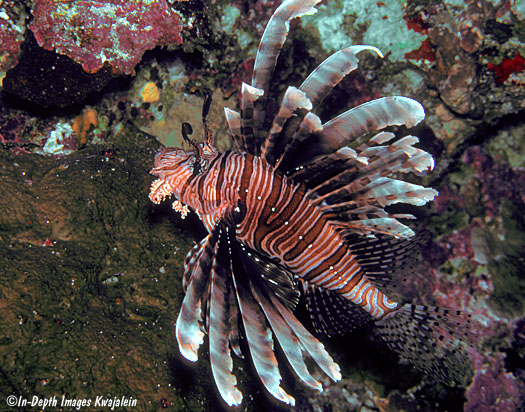
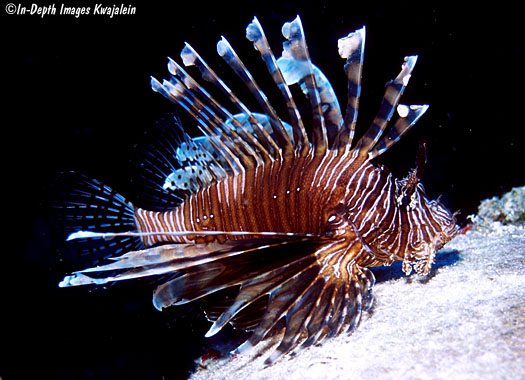
Adults vary from red to nearly black.
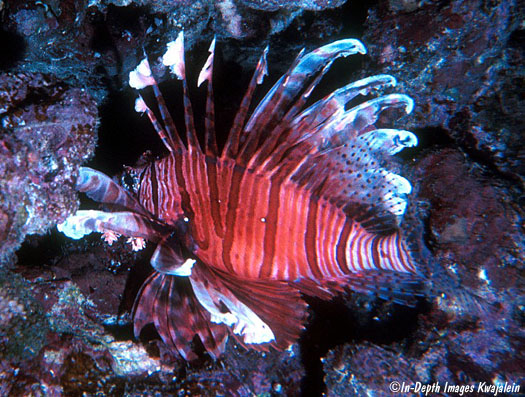
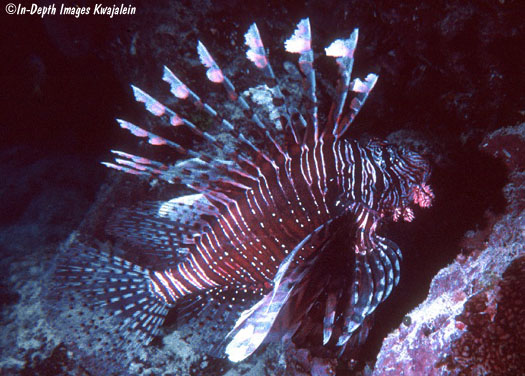
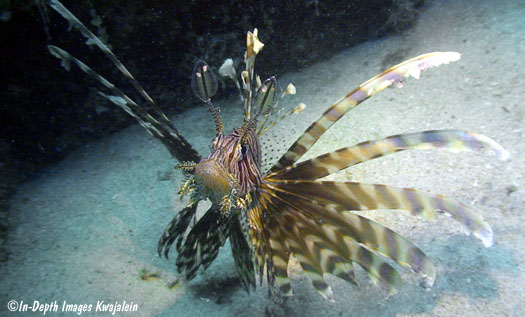
A few adult fish have an elaborate antenna just dorsal of each eye. Sometimes these antennae terminate in large paddles, sometimes with distinct black eyespots.
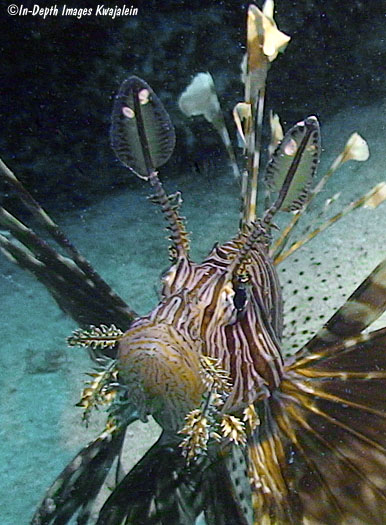
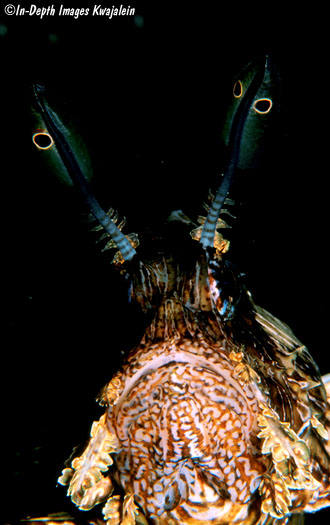
Young individuals and juvenile tend to have much longer pectoral rays relative to their body size. Sometimes they look like huge long-legged spiders. Young ones are often black, but the youngest juveniles are usually light in color.
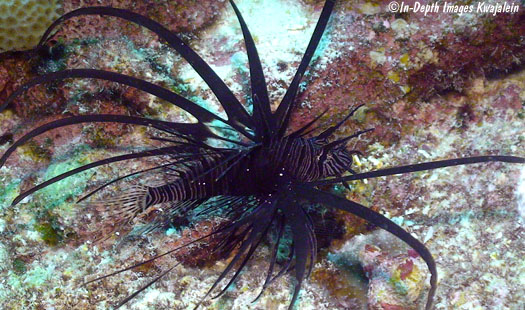
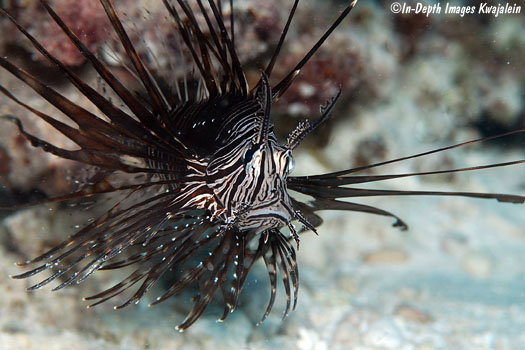
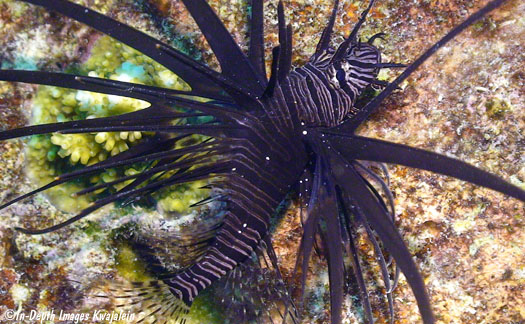
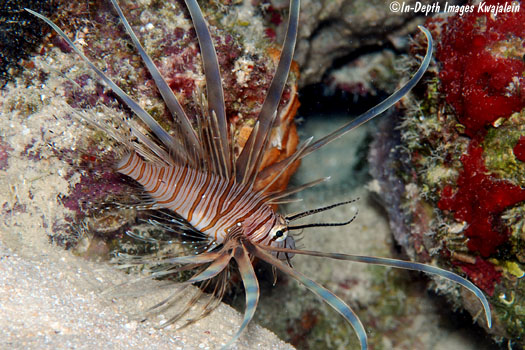
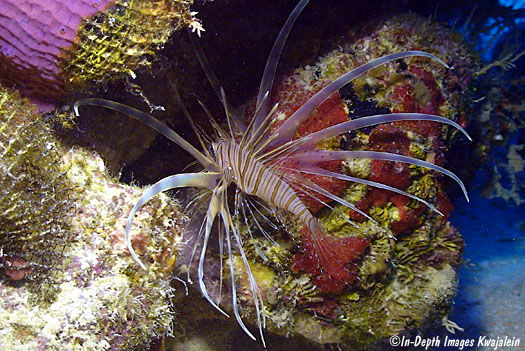
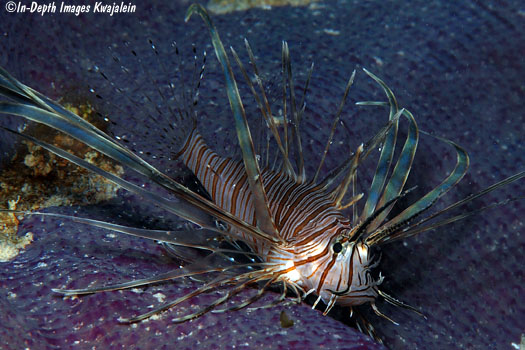
Young ones often have smoother antennae and mouth processes. These can get pretty frilly in adults.
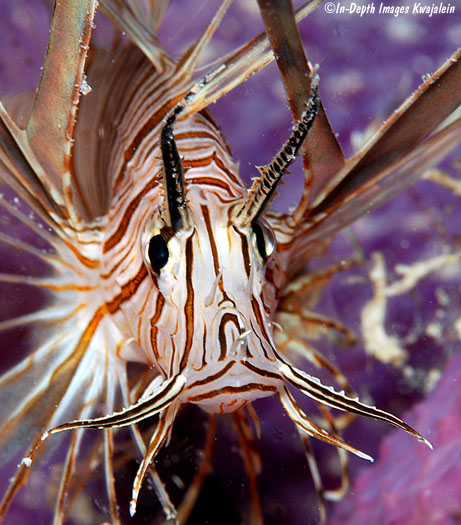
Sometimes they share their space with other kinds of lions, like the Pteropterois antennata in the background below.
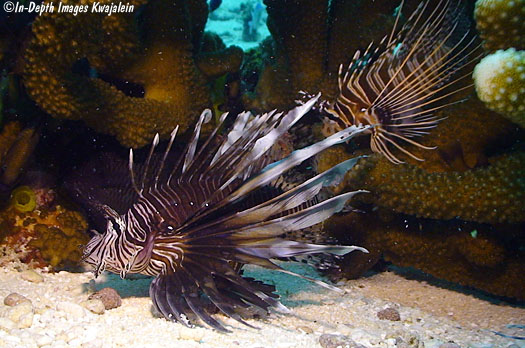
Created 27 June 2011
Updated 10 September 2011